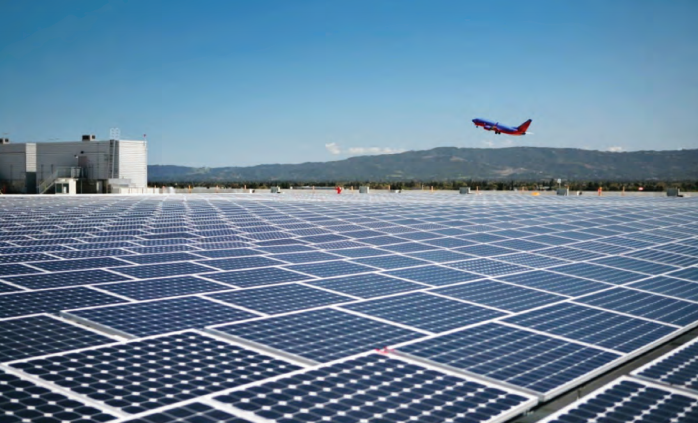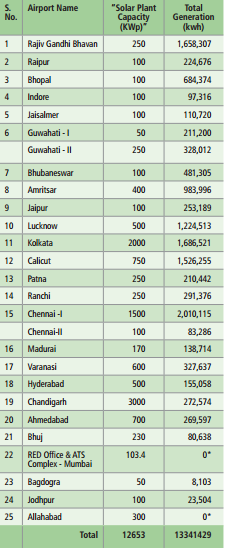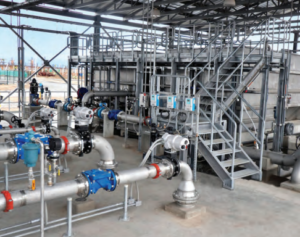Green Initiatives
AIBM
April - June 2017
Sustainable development of airports has been a work in progress, but with no sign of slowing down AAI looks to the past, present and future to continue its green initiatives in airports around the nation.
What does an organisation do when they have to ensure that the huge infrastructure they take care of is on the right path to sustainable development? They start by implementing plans in phases to make said infrastructure conserve energy and water, and invest in long term solutions like solar power. Airports Authority of India (AAI) is on this very mission to make sure there is sustainable development in the aviation infrastructure.
AAI has taken steps for sustainable development in the areas of solar power plants, energy conservation, water conservation and pollution control measures. They have also actively taken up welfare measures for people affected by these projects under Corporate Social Responsibility (CSR).
Solar PV Policy AAI has been setting up solar power plants for energy generation in a number of airports. AAI has signed MoU with Solar Energy Corporation of India (SECI) to set up the rooftop and ground mounted solar power plants at these airports. AAI has commissioned 12.65 MW (megawatts) solar power plants at 25 airports and 17.04 MW at another five airports are in progress.
AAI has already generated approximately 13.34 million units from the commissioned plants, which help in reduction of carbon footprint thereby contributing to the global mission of addressing climate change. AAI has so far reduced 12,000 metric tonnes of carbon emission solely from the already installed solar plants.
Studies are being conducted about the feasibility of enhancing the capacity of ground mounted solar projects to install solar power plants at all major airports. Further AAI is in the process of formulating new methods to utilise the available vacant land in the premises of the airports for solar projects under the guidance of Ministry of New and Renewable Energy (MNRE)/SECI with an aim of energy neutrality.
Use of FGEP and PCA Units
The Fixed Ground Electrical Power (FGEP) and Pre-Conditioned Air (PCA) units are being considered in the new airport buildings where new rotunda and aero bridges are being provided for environment conservation from the ATF (Aircraft Turbine Fuel) consumption/combustion during the parking at Passenger Boarding Bridges (PBBs) or at apron for arrival and departure of passenger’s, so that the aircraft can stop their engines/auxiliary engines and save combustion of fuel.
Total Generation from Solar PV Plants (up to March’ 2017)
Energy Audit
AAI has already conducted energy audit at 42 airports/premises in the first phase, while 14 airports/premises that have been identified for its second phase are under process.
Energy Conservation
Apart from installing solar panels, AAI is taking a number of other measures to be energy efficient. They are replacing old and hazardous mercury based CFL lights with LED based lights to protect the environment and drastically reduce the energy consumption. They are also using energy efficient chillers, energy efficient pumps, energy efficient star rated air conditioners, Variable Frequency Drive (VFD) for various applications, Automatic Power Factor Control (APFC) panels for improved power factor, Building Management System (BMS) and sensors for operation of heating, ventilation and air conditioning (HVAC) system, and also LED light for the taxiway.
Water Audit
Phases one and two for water audit have been completed in CHQ, DGCA, AERA and allied buildings; and 11 airports respectively. The observations and recommendations from these audits are being implemented as per short term and long term measures in a phased manner.
Water Conservation
As regards water conservation, one of the main task-at-hand is Rain Water Harvesting (RWH), which harvests storm water instead of letting it go to waste. Most of the airports and AAI establishment implement this. At most of the airports RWH pits are created for recharging the ground water aquifer. At some airports rain water is collected in tanks for reuse in gardening purposes.
Pollution Control Measures
AAI has also taken steps to reduce pollution by setting up Sewage Treatment Plant (STP) at airports for management of waste disposal and to use the treated recycled water for gardening purposes, for flushing in toilets and also for the HVAC system to minimise the use of fresh water. Sludge as a final product with water is used in the gardening as compost. STPs are working in 43 airports across India.
Through these measures AAI is trying to minimise the pollution of natural water bodies and also conserve on consumption of water.
To combat noise pollution, AAI is using diesel generator (DG) sets that are compact and have an acoustic enclosure. Water sprinklers are used to prevent dust pollution from construction work. And lastly, they are conducting extensive landscaping with horticulture and tree plantation to keep it green.
Being eco-friendly, investing in renewable energy, using sustainable methods, cutting down on wastage, reducing pollution, etc., all of these are correlated, and only when all these aspects are looked at as one whole cohesive issue, can sustainable development be truly possible, which is why AAI is working to ensure that all these areas are given its due, so that the airports in the nation can head towards a green future.












